Arizona Bark Scorpion
- March 26, 2024
- 0 comment
The Arizona Bark Scorpion, scientifically known as Centruroides sculpturatus, is a fascinating arachnid inhabiting the arid regions of the American Southwest, particularly the Sonoran Desert. Renowned for its slender body and pale yellow coloration, often adorned with dark markings, this scorpion species stands out amidst its desert habitat. Measuring typically between 2 to 3 inches in length, it possesses distinctive elongated pincers and a tail equipped with a venomous stinger. Nocturnal by nature, Arizona Bark Scorpions emerge under the cover of darkness to hunt for prey and seek mates, displaying remarkable agility and predatory prowess.

While encounters with humans are not uncommon, their venom, though potent, is rarely life-threatening to healthy adults, causing intense pain and discomfort at worst. However, caution is warranted, especially for sensitive individuals, as severe reactions can occur. Despite their fearsome reputation, Arizona Bark Scorpions play a vital role in desert ecosystems, contributing to insect population control and serving as indicators of ecological health. Understanding and respecting these enigmatic creatures are crucial for fostering coexistence and preserving the delicate balance of desert biodiversity.
Arizona Bark Scorpion Characteristics
| Characteristic | Description |
|---|---|
| Scientific Name | Centruroides sculpturatus |
| Size | Typically 2 to 3 inches in length |
| Coloration | Pale yellow with dark markings |
| Body Shape | Slender, with elongated pincers and tail |
| Habitat | Arid environments, rocky outcrops, desert shrubbery |
| Distribution | Sonoran Desert, spanning Arizona, California, Nevada, Mexico |
| Activity | Nocturnal, active primarily at night |
| Prey | Feeds on insects, hunts using vibrations and movements |
| Venom | Potent neurotoxic venom, primarily for hunting |
| Danger to Humans | Sting can cause intense pain, rarely life-threatening |
| Conservation Status | Threatened by habitat destruction and human persecution |
| Ecological Role | Apex predator, helps control insect populations |
| Adaptations | Evolved traits for survival in harsh desert conditions |
Unraveling Nature’s Enigmatic Predator
Scorpions have long captivated human imagination with their mystique and enigmatic presence. Among the various species, the Arizona Bark Scorpion (Centruroides sculpturatus) stands out as one of the most intriguing and feared arachnids inhabiting the deserts of the American Southwest. In this article, we delve into the intricate details of this fascinating creature, exploring its biology, behavior, interaction with humans, and its significance in the ecosystem.
Appearance and Identification
Physical Characteristics
The Arizona Bark Scorpion exhibits several distinctive physical characteristics that set it apart from other scorpion species. Typically measuring between 2 to 3 inches in length, it has a slender body with a segmented exoskeleton. Its coloration is pale yellow to light brown, often with darker markings on its back. The scorpion’s body is divided into two main parts: the cephalothorax (head and thorax) and the metasoma (abdomen), which includes the tail. It has eight legs, two pedipalps (pincers), and a long, segmented tail that curves over its back.
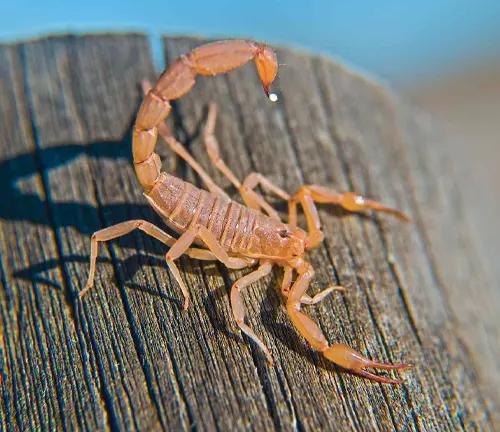
Identifying Features
Several key features help in identifying the Arizona Bark Scorpion from other scorpion species. One distinguishing characteristic is the presence of dark, triangular markings on its back, which contrast against its lighter body color. These markings often resemble stripes or bands and are visible even in low light conditions. The scorpion’s elongated pincers, or pedipalps, are another defining feature, with slender, curved claws used for grasping prey and defense.

Additionally, the tail of the Arizona Bark Scorpion is slender and segmented, ending in a bulbous structure called the telson, which contains the venom glands and stinger. Overall, the combination of pale coloration, dark markings, elongated pincers, and slender tail helps differentiate the Arizona Bark Scorpion from other scorpion species found in its habitat.
Habitat and Distribution
Preferred Environment
The Arizona Bark Scorpion thrives in arid environments characterized by rocky terrain, sparse vegetation, and minimal moisture. It is often found in habitats such as rocky outcrops, canyons, desert washes, and sandy desert flats. These scorpions prefer areas with ample hiding spots, such as crevices, burrows, and under rocks or debris, where they can seek shelter from the intense desert sun during the day. They are also commonly encountered near human habitation, including suburban areas, where they may seek refuge in gardens, under structures, and in outdoor landscaping features.

Despite their preference for arid conditions, Arizona Bark Scorpions are known to seek out sources of moisture, such as dripping faucets, swimming pools, and irrigated gardens, especially during periods of extreme heat or drought.
Geographical Distribution
The Arizona Bark Scorpion is native to the southwestern United States and parts of northern Mexico, with its range primarily centered around the Sonoran Desert region. Within the United States, it is found predominantly in the states of Arizona, California, and Nevada, where it inhabits desert ecosystems characterized by hot, dry climates. In Mexico, it occurs in the northern states of Sonora and Baja California.

Within its range, the distribution of Arizona Bark Scorpions may vary based on factors such as habitat availability, temperature, and prey abundance. They are often encountered in rocky desert habitats, including mountain foothills, desert canyons, and scrublands, where they play a vital role as predators in the desert ecosystem.
Behavior and Lifestyle
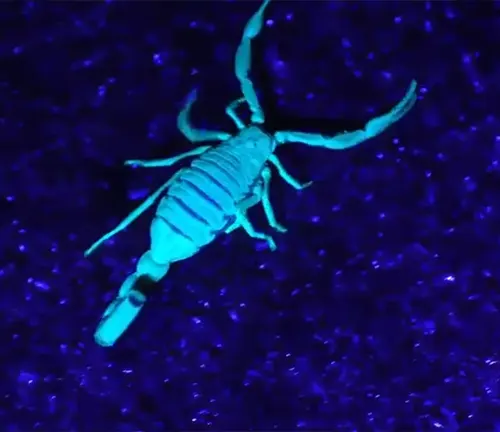
Nocturnal Habits
The Arizona Bark Scorpion is primarily nocturnal, meaning it is most active during the night and rests during the day. This behavior helps it avoid the scorching heat of the desert sun, as well as potential predators. As dusk falls, Arizona Bark Scorpions emerge from their hiding places to hunt for prey and engage in other activities such as mating and territorial behaviors. Their nocturnal lifestyle is well-suited to their arid desert environment, allowing them to conserve moisture and energy while taking advantage of cooler nighttime temperatures.
Prey and Hunting Techniques
Arizona Bark Scorpions are carnivorous predators that primarily feed on insects and other arthropods. They use specialized sensory organs called pectines located on the underside of their bodies to detect vibrations and chemical cues, helping them locate potential prey. Once prey is detected, the scorpion employs stealth and patience to ambush its target, relying on its keen senses and lightning-fast reflexes to capture prey with its pincers. Once caught, the scorpion delivers a venomous sting to immobilize its prey before consuming it.

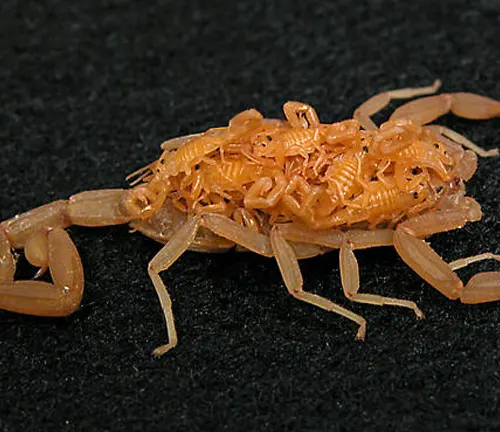
Reproduction Cycle
The reproduction cycle of the Arizona Bark Scorpion begins with courtship rituals between males and females. Males use their pincers to grasp the female’s pedipalps during a complex dance-like mating ritual. Once courtship is complete, the male deposits a spermatophore, a packet containing sperm, which the female retrieves and uses to fertilize her eggs internally. After a gestation period of several months, the female gives birth to live young, known as scorplings. The scorplings climb onto the mother’s back, where they remain until their first molt. During this time, the mother provides protection and may assist with regulating their environment. After the scorplings molt, they disperse and begin their independent lives, continuing the cycle of reproduction.
Venom and Sting
Potency of Venom
The venom of the Arizona Bark Scorpion is potent and primarily neurotoxic, meaning it targets the nervous system of its prey. While the exact composition of the venom varies among scorpion species, the venom of the Arizona Bark Scorpion contains a mix of peptides and proteins that can cause significant physiological effects in its prey. The potency of the venom is also influenced by factors such as the size and age of the scorpion, as well as the sensitivity of the victim.
Effects on Humans
When the Arizona Bark Scorpion stings a human, the effects can range from mild to severe, depending on various factors including the individual’s age, health, and sensitivity to the venom. Common symptoms of a scorpion sting include intense pain, swelling, and redness at the site of the sting. In more severe cases, individuals may experience numbness, tingling, muscle twitching, difficulty breathing, and even paralysis. While fatalities from Arizona Bark Scorpion stings are rare, prompt medical attention is crucial to manage symptoms and prevent complications, especially in vulnerable populations such as children and the elderly.
Treatment for Stings
Treatment for Arizona Bark Scorpion stings focuses on managing symptoms and minimizing the spread of venom throughout the body. If stung, it is essential to remain calm and seek medical help immediately. While awaiting medical assistance, the following steps can be taken:
- Wash the sting site with soap and water to reduce the risk of infection.
- Apply a cold compress or ice pack to reduce swelling and alleviate pain.
- Keep the affected limb elevated to slow the spread of venom.
- Avoid using tourniquets or attempting to suck out the venom, as these methods can worsen the injury.
Interaction with Humans
Encounters in Residential Areas
Arizona Bark Scorpions are commonly encountered in residential areas, especially in regions where their natural desert habitat overlaps with human development. These encounters can occur both indoors and outdoors, as scorpions seek shelter, food, and moisture. Indoors, they may hide in dark, sheltered areas such as closets, attics, basements, and shoes left on the floor. Outdoors, they may be found under rocks, in woodpiles, and among landscaping features. Encounters with Arizona Bark Scorpions can be alarming for homeowners, but with proper awareness and preventive measures, the risk of indoor encounters can be minimized.
Prevention Methods
To reduce the likelihood of Arizona Bark Scorpion encounters in residential areas, several preventive measures can be implemented:
- Seal cracks, gaps, and openings around doors, windows, pipes, and utility lines to prevent scorpions from entering the home.
- Install door sweeps and weather stripping to create a tight seal at entry points.
- Remove debris, woodpiles, and clutter from around the exterior of the home to eliminate potential hiding spots.
- Trim vegetation and shrubbery away from the exterior walls of the home to reduce harborage areas.
- Keep outdoor lights off or use yellow or sodium vapor lights, which are less attractive to insects and consequently, scorpions.
- Shake out clothing, shoes, and bedding before use, especially if they have been left outside or in storage areas.
- Use screens on windows, vents, and chimney openings to prevent scorpions from entering the home.
Responding to Stings
If a person is stung by an Arizona Bark Scorpion, it’s essential to respond promptly and appropriately. Here are steps to take:
- Remain calm and reassure the affected individual.
- Move them to a safe location away from the scorpion to prevent further stings.
- Wash the sting site with soap and water to reduce the risk of infection.
- Apply a cold compress or ice pack to the sting site to alleviate pain and reduce swelling.
- Keep the affected limb elevated to slow the spread of venom.
- Seek medical attention immediately, especially if the individual experiences severe symptoms such as difficulty breathing, muscle twitching, or loss of consciousness.
- Provide healthcare providers with information about the scorpion species involved, if possible, to assist with treatment decisions.
Myths and Facts
Common Misconceptions
Despite their relatively small size and generally non-aggressive behavior, Arizona Bark Scorpions are often surrounded by misconceptions. Some common misconceptions about these scorpions include:
- All Scorpions Are Deadly: While some scorpion species possess venom that can be harmful to humans, not all scorpions are deadly. In the case of the Arizona Bark Scorpion, while its sting can be painful and cause discomfort, fatalities are rare, especially with prompt medical treatment.
- They’re Always Aggressive: Arizona Bark Scorpions are typically not aggressive towards humans and prefer to avoid confrontation. They may sting in self-defense if threatened or provoked, but they are more likely to retreat and hide.
- They’re Always Found in Desert Areas: While Arizona Bark Scorpions are commonly associated with desert environments, they can also be found in urban and suburban areas, especially where their natural habitat overlaps with human development. This includes residential neighborhoods and even inside homes.
- They’re Always Lethal to Pets: While pets can be affected by Arizona Bark Scorpion stings, especially smaller animals, fatalities are rare. Most pets will experience symptoms similar to humans, such as pain, swelling, and discomfort, but they can typically recover with proper veterinary care.
Realistic Risks
Understanding the realistic risks associated with Arizona Bark Scorpions is essential for informed decision-making and risk management. Some realistic risks include:
- Pain and Discomfort from Stings: While Arizona Bark Scorpion stings can cause intense pain and discomfort, especially in sensitive individuals, most people will recover without long-term complications with appropriate medical treatment.
- Potential Allergic Reactions: Some individuals may be allergic to scorpion venom, leading to more severe symptoms such as difficulty breathing, swelling of the throat, and anaphylaxis. These cases require immediate medical attention.
- Infestations in Residential Areas: In areas where Arizona Bark Scorpions are prevalent, there is a risk of infestations in and around homes. Taking preventive measures such as sealing entry points and reducing hiding spots can help minimize this risk.
- Encounters with Pets and Children: Pets and small children are more susceptible to scorpion stings due to their curiosity and proximity to the ground. Supervision and education are essential for reducing the risk of encounters and ensuring prompt treatment if stings occur.
Conservation Status
Threats to Population
The Arizona Bark Scorpion faces several threats to its population, primarily stemming from human activities and environmental changes. Some of the key threats include:
- Habitat Loss and Fragmentation: Urbanization and agricultural development continue to encroach upon the natural habitats of Arizona Bark Scorpions, resulting in habitat loss and fragmentation. As natural landscapes are converted into residential and commercial areas, scorpions lose essential shelter, foraging grounds, and breeding sites.
- Pesticide Use: The indiscriminate use of pesticides and insecticides, both in urban and agricultural settings, poses a significant threat to Arizona Bark Scorpion populations. Direct exposure to these chemicals can lead to mortality among scorpions, as well as disrupt their food sources and ecological interactions.
- Climate Change: Climate change, characterized by rising temperatures and altered precipitation patterns, poses a threat to Arizona Bark Scorpion populations. Desert ecosystems are particularly sensitive to climate variations, and changes in temperature and rainfall can impact the availability of water, prey abundance, and overall habitat suitability for scorpions.
- Predation and Competition: While Arizona Bark Scorpions are apex predators within their ecological niche, they are not immune to predation and competition from other species. Predators such as birds, mammals, and other arthropods may prey upon scorpions, while competition for resources with other scorpion species or arthropods can further strain populations.
- Illegal Collection and Trade: In some regions, Arizona Bark Scorpions are illegally collected for the pet trade or for use in traditional medicine practices. Over-collection can deplete local populations and disrupt natural ecosystems, leading to population declines and genetic bottlenecks.
- Human Persecution: Fear and misunderstanding often lead to the persecution of Arizona Bark Scorpions by humans. In some cases, individuals may intentionally kill or remove scorpions from their habitats, either out of concern for safety or as a result of misconceptions about their role in the ecosystem.
Conservation Efforts
To address the threats facing Arizona Bark Scorpion populations, various conservation efforts are underway:
- Habitat Protection: Initiatives focused on preserving and restoring natural habitats are critical for ensuring the long-term survival of Arizona Bark Scorpions. This includes establishing protected areas, implementing land-use planning measures, and promoting habitat connectivity.
- Public Education: Raising awareness about the importance of scorpions in desert ecosystems and dispelling misconceptions can help foster appreciation and conservation efforts. Educational programs, outreach events, and informative materials can engage communities in conservation initiatives.
- Research and Monitoring: Continued research into the ecology, behavior, and population dynamics of Arizona Bark Scorpions is essential for informed conservation decision-making. Monitoring programs can track population trends, identify threats, and assess the effectiveness of conservation measures.
- Regulation of Trade: Regulation and enforcement of laws governing the collection and trade of Arizona Bark Scorpions can help prevent over-exploitation and illegal trafficking. This includes implementing permits, quotas, and monitoring mechanisms to ensure sustainable practices.
- Community Engagement: Involving local communities in conservation efforts through participatory approaches, stakeholder consultations, and collaborative partnerships can enhance the effectiveness and long-term success of conservation initiatives.
Research and Scientific Significance
Study of Venom
Scientists study the venom of the Arizona Bark Scorpion to understand its composition, mode of action, and potential applications in medicine. By analyzing the proteins and peptides present in the venom, researchers aim to uncover new drug targets, develop antivenom treatments, and explore therapeutic applications for various medical conditions.
Biomedical Applications
The venom of the Arizona Bark Scorpion has shown promise in biomedical applications, including pain management, cancer research, and neuroscience. Components of the venom have been investigated for their analgesic properties, potential as anti-cancer agents, and ability to modulate neurotransmitter activity in the central nervous system.
Adaptations and Survival Strategies
Evolutionary Traits
The Arizona Bark Scorpion exhibits various evolutionary traits that have contributed to its survival and success in arid desert environments. These traits include adaptations for nocturnal hunting, specialized sensory organs for detecting prey and predators, and venomous stingers for defense and subduing prey.
Ecological Role
Arizona Bark Scorpions play a crucial ecological role as apex predators in desert ecosystems. By preying on insects and other arthropods, they help regulate population sizes and maintain ecological balance. Additionally, scorpions serve as a food source for other predators, contributing to the complexity of food webs in desert habitats.
Scorpion Control and Management
Pest Control Measures
In agricultural settings, Arizona Bark Scorpions can be considered beneficial predators that help control pest populations naturally. Integrated pest management strategies may include promoting scorpion-friendly habitats, reducing reliance on chemical pesticides, and fostering biodiversity to support natural predator-prey relationships.
Natural Predators
Despite being apex predators, Arizona Bark Scorpions have natural predators such as birds, mammals, reptiles, and other arthropods. These predators play a role in regulating scorpion populations and contribute to the overall balance of desert ecosystems.
Cultural Significance
Symbolism in Native Cultures
In Native American cultures, the Arizona Bark Scorpion holds symbolic significance, often representing resilience, protection, and survival in harsh environments. Scorpions may feature in tribal stories, artwork, and rituals, symbolizing adaptation to adversity and the interconnectedness of all living beings.
Modern Representations
In modern culture, the Arizona Bark Scorpion is often depicted in various forms of media, including literature, film, and art. Its fearsome appearance and potent venom make it a popular subject for horror stories and thrillers, while its ecological importance may be highlighted in educational materials and documentaries.
Educational Awareness
Public Education Programs
Public education programs aim to increase awareness and understanding of Arizona Bark Scorpions, their behavior, and their role in ecosystems. These programs may include school presentations, community workshops, informational brochures, and online resources to promote coexistence and safety.
Awareness Campaigns
Awareness campaigns raise awareness about the potential risks associated with Arizona Bark Scorpions and provide information on preventive measures and proper response to stings. These campaigns may target residents of areas where scorpions are prevalent, emphasizing the importance of habitat modification and vigilance.
Future Prospects
Research Directions
Future research on Arizona Bark Scorpions may focus on areas such as venom biochemistry, ecological interactions, population dynamics, and conservation genetics. By advancing our knowledge in these areas, researchers can inform conservation strategies and contribute to the sustainable management of scorpion populations.
Conservation Challenges
Conservation challenges for Arizona Bark Scorpions include habitat loss and fragmentation, pesticide use, climate change, illegal collection, and human persecution. Addressing these challenges requires coordinated efforts among researchers, policymakers, communities, and stakeholders to protect scorpion habitats and promote coexistence with humans.
Different Species
The term “Arizona Bark Scorpion” typically refers to a specific species, Centruroides sculpturatus, which is native to the arid regions of the American Southwest, particularly the Sonoran Desert.

Frequently Asked Questions (FAQs)
- Are Arizona Bark Scorpions aggressive?
Arizona Bark Scorpions are not typically aggressive towards humans unless provoked or threatened. They prefer to retreat and hide rather than engage in confrontation. - How can I treat an Arizona Bark Scorpion sting?
If stung by an Arizona Bark Scorpion, clean the affected area with soap and water, apply a cold compress to reduce swelling, and seek medical attention if symptoms persist or worsen, especially in the case of severe reactions. - Can I keep an Arizona Bark Scorpion as a pet?
While some people may choose to keep scorpions as pets, including Arizona Bark Scorpions, it’s essential to understand the care requirements and potential risks associated with keeping venomous arachnids. Research and proper handling are crucial. - What should I do if my pet is stung by an Arizona Bark Scorpion?
If your pet is stung by an Arizona Bark Scorpion, monitor them closely for signs of distress or allergic reactions. Contact your veterinarian immediately for guidance on appropriate treatment and care. - Do Arizona Bark Scorpions have any natural predators?
Yes, Arizona Bark Scorpions have natural predators, including birds, mammals, and other arthropods. These predators help regulate scorpion populations in their natural habitat. - Can Arizona Bark Scorpions climb walls or ceilings?
Yes, Arizona Bark Scorpions are adept climbers and can scale walls and even traverse ceilings using their specialized appendages. Proper home sealing measures can help prevent indoor encounters. - How long do Arizona Bark Scorpions live?
Arizona Bark Scorpions have relatively long lifespans for arachnids, typically living up to 4-6 years in the wild, depending on environmental factors and predation. - Do Arizona Bark Scorpions pose a threat to agriculture?
While Arizona Bark Scorpions primarily prey on insects, they do not pose significant threats to agriculture. Their role in controlling pest populations can actually be beneficial to crops in some cases. - Are there any laws or regulations protecting Arizona Bark Scorpions?
Laws and regulations regarding Arizona Bark Scorpions may vary by region, but they are generally protected as native wildlife in their natural habitats. It’s essential to check local regulations before attempting to capture or relocate them. - Can Arizona Bark Scorpions be found in urban areas?
- Yes, Arizona Bark Scorpions are known to inhabit urban areas, particularly suburban neighborhoods near their natural desert habitats. Proper pest control and home maintenance can help reduce the risk of indoor encounters.








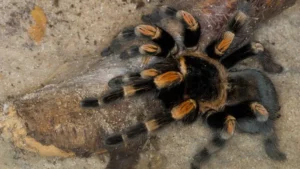
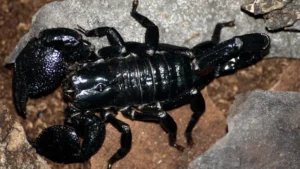




Leave your comment